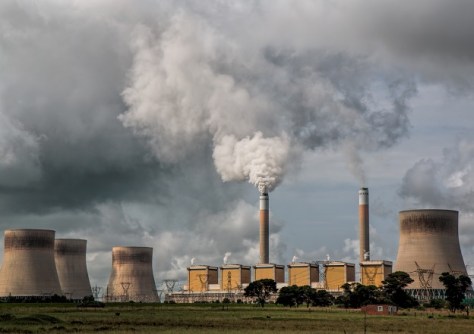
Between 300 and 350 FTE positions will go, but CSIRO has not yet identified which research sectors will be affected.
The seemingly never-ending assault on science funding in Australia continues, with an announcement this week that the CSIRO will cut staffing levels in its research units by between 300 to 350 full-time equivalent (FTE) positions.
At the time of writing, there was no clarity on which research programs or personnel would be affected, so it is too early to say whether any geospatial staff will face cuts. If you have any information to share, please let us know.
In a statement, the CSIRO said that “the organisation needs to adapt to achieve the right balance of focussed research, supported by aligned capability, quality research infrastructure and safe and sustainable sites — where CSIRO researchers can make discoveries and apply them to change the world”.
This comes after “decades of stretching resources to maintain the breadth of its programs and size of its workforce,” with the CSIRO having now “reached a critical inflection point”.

“CSIRO’s reason for being is to deliver the greatest possible impact for the nation through our research,” said CSIRO’s Chief Executive, Dr Doug Hilton.
“As today’s stewards of CSIRO, we have a responsibility to make decisions that ensure we can continue to deliver science that improves the lives of all Australians for generations to come.
“We must set up CSIRO for the decades ahead with a sharpened research focus that capitalises on our unique strengths, allows us to concentrate on the profound challenges we face as a nation and deliver solutions at scale.”
A focus on focus areas
CSIRO conducted an 18-month review to identify “key focus areas” to “bring a renewed emphasis on inventing and deploying technological solutions to tackle national problems”.
Those focus areas include:
- Supporting a transition to clean, affordable energy, including transforming critical minerals into materials;
- Addressing climate change, with a focus on adaptation and resilience;
- Applying advanced technologies such as AI, quantum, sensing, robotics and manufacturing to boost innovation in core domestic industries;
- Deploying technological solutions to increase the productivity and resilience of farming; and
- Mitigating and eradicating biosecurity threats; and
A sixth focus area is described nebulously as “Applying disruptive science and engineering to unlock the unknown and solve unanswered questions”.
Of course, those focus areas involve pretty much all fields of science and engineering, including geospatial.
CSIRO says it also needs to spend between $80 million and $135 million each year over the next decade just to repair, replace and improve “essential infrastructure and technology”.
More than 800 jobs have already gone
The CSIRO Staff Association has blasted the federal government for what it is calling “deep and devastating cuts,” pointing out that more than 800 jobs have already been culled over the past 18 months.
It says this includes 400 science support roles, 120 positions from Data61, 30 from the Agriculture and Food Research Unit, and 43 from Health and Biosecurity.

“This is a very sad day for publicly funded science in this country, and the Albanese Government is just sitting back and watching it happen,” said CSIRO Staff Association Section Secretary, Susan Tonks.
“They are now responsible for cuts to public science that exceed the Abbott Government — cuts that current Labor MPs rightly slammed at the time.
Tonks went on to say that these “are some the worst cuts the CSIRO has ever seen, and they’re coming at a time when we should be investing in and building up public science”.
“CSIRO undertakes incredibly important work that benefits Australian families, communities, and the world,” she said.
“Our scientists are protecting crops from disease, building national resilience in the face of a changing climate, strengthening our defences against biosecurity risks, and driving innovation in health and technology.
“The Albanese Labor Government needs to fix this mess by committing to urgent funding that halts the cuts and secures the future of CSIRO’s world-leading science and research.”
Need to lift R&D investment
Speaking to ABC Radio, Professor Chennupati Jagadish, President of the Australian Academy of Science, said that “What has been happening is the cost of research has been going up, and research investments have gone down during the last 15 years or so”.

“We used to spend about 2.25% of our GDP on R&D; this includes business, government, universities and philanthropy, but now we have gone down to 1.63%.”
Professor Jagadish pointed out that the OECD average for national R&D investment is 2.7%, which places Australia in the bottom half of the league.
“I think we really need to invest more in R&D and change the direction of this downward slope so that investment is moving in a positive direction,” he said.
“We also need to ensure that research and science is seen as an investment, not as a cost.”






